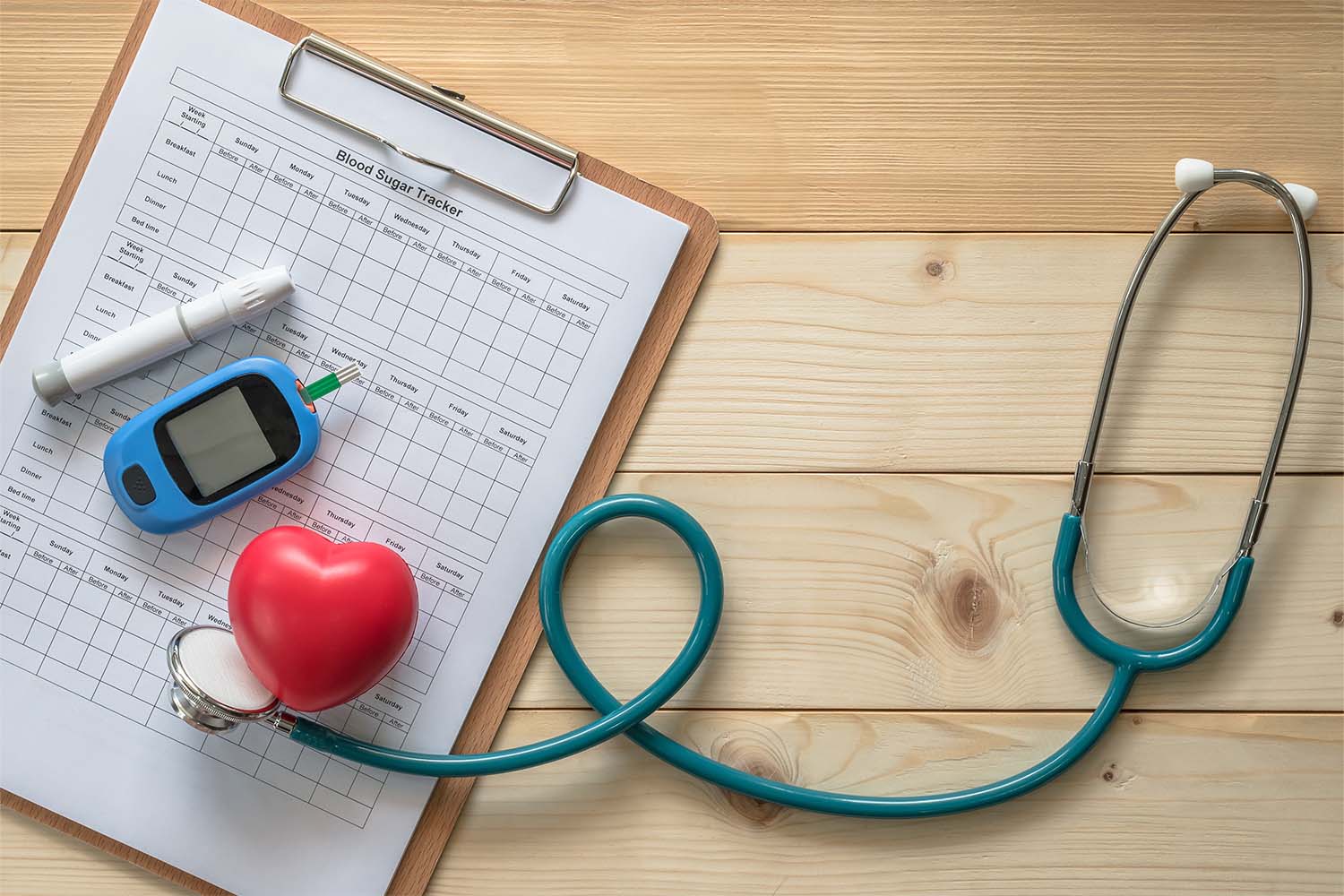
Dr. Eric Venn-Watson’s Highlights
HIGHLIGHTS
Type 1 diabetes is an autoimmune disease where the body attacks the pancreas cells responsible for producing insulin.
Type 2 diabetes is typically developed during childhood through adulthood, and results in insulin resistance or inefficient insulin production.
Both types of diabetes are manageable with a proper care plan, but left unmanaged, can result in symptoms such as increased thirst, extreme lethargy and lightheadedness, blurry vision, and increased urination, among others.
Living with diabetes is common in the United States. According to the CDC, about one in 10 Americans suffer from some form of diabetes.
If you or a loved one has diabetes, it’s important to understand the disease, proper diabetes care, and how to support a healthy lifestyle. Together, we’ll discuss the differences between type 1 and type 2 diabetes. We will examine the different diabetes symptoms and how advances in diabetes treatments can help you better manage your disease.
Now let’s look at how diabetes develops and what forms of diabetes there are.
What Is Diabetes?
All forms of diabetes start with unhealthy blood sugar levels. When you eat food, it breaks down into glucose in your bloodstream. When blood sugar rises, the pancreas produces insulin, a hormone that helps remove glucose from your blood and take it to the cells that need it.
In diabetics, the pancreas either doesn’t produce enough insulin, or the cells that need insulin malfunction, becoming insulin resistant and not taking in enough glucose, resulting in high blood sugar levels and a diagnosis of diabetes.
How Many Forms of Diabetes Exist?
Diabetes mellitus is a blanket term for three different types of diabetes: type 1, type 2, and gestational diabetes.
Gestational diabetes only occurs in pregnant women and often goes away once the pregnancy is over. However, developing gestational diabetes places you at a higher risk of having type 2 diabetes later in life.
There is also prediabetes, where blood sugar levels are above normal range, but are not quite high enough for a type 2 diabetes diagnosis.
What To Know About Type 1 Diabetes
Type 1 diabetes is an autoimmune disorder in which the body’s immune system attacks the cells in the pancreas that make insulin. Without these healthy pancreatic cells, the body makes too little or no insulin at all.
Causes
Type 1 diabetes is a genetic, autoimmune disorder, but some factors, like certain rare viruses, may increase a person’s likelihood of developing the disease.
Symptoms
Type 1 diabetes symptoms are often ignored until a complication or life-threatening emergency occurs. Type 1 diabetes is usually diagnosed in children, and it may be difficult to pinpoint early signs or symptoms in the early stages of childhood development.
However, symptoms include:
- Increased thirst
- Frequent urination
- Irritability and mood changes
- Unexplained weight loss
- Fatigue and muscle weakness
- Blurred vision
- Extreme hunger
These symptoms may be difficult to notice, especially in a child who may not communicate what they’re experiencing. Early diagnosis is vital to ensure proper management of type 1 diabetes.
Diagnosis
Type 1 diabetes is also referred to as juvenile diabetes because it is most often diagnosed early in childhood or adolescence. It’s possible to develop type 1 diabetes as an adult, though this isn’t as common.
Diagnosis is generally made through a simple blood test to check A1C or fasting glucose levels.
Treatment
Science has advanced the treatment of type 1 diabetes so that people who have it can lead normal, healthy lives enjoying the activities they love. Some treatments may include insulin injections, but more common is placing an insulin pump that regularly doses insulin into the body.
You’ll still need to closely monitor your blood sugar, usually between 4-10 times daily. However, advancements in monitors have made that process much more convenient.
Insulin Options
There are four different types of insulin treatment a person with type 1 diabetes may use to help regulate their blood sugar: short-acting insulin, rapid-acting insulin, intermediate-acting insulin, and long-acting insulin.
- Short-acting insulin is often used 30-60 minutes before a person with type 1 diabetes plans to have a meal. This helps prepare the body for the incoming food that will be broken down into glucose and ensures there is enough insulin available to move the glucose from the bloodstream.
- Rapid-acting insulin is taken at the start of a meal. A person with type 1 diabetes might use rapid-acting insulin because it more closely mimics insulin produced by the pancreas. It quickly reduces blood sugar levels and works only for a short period of time. Sometimes, rapid-acting insulin is preferred over short-acting insulin as it may be able to reduce a drop in blood sugar hours after the meal is consumed.
- Intermediate-acting insulin works over a longer period of time. This means you might only need to use insulin once or twice per day. This type of insulin takes about an hour to begin working, and will continue working for about seven hours after it is taken. It is sometimes used simultaneously with short and rapid-acting insulin.
- Long-acting insulin works similarly to intermediate-acting insulin. It is taken once a day and slowly releases insulin that works for a 24-hour period. It is normally taken first thing in the morning or just before bed.
Only a doctor can prescribe insulin medications. It’s important to discuss certain factors with your doctor to determine the best insulin options for your situation.
Complications
Type 1 diabetes is a serious disease that can have life-threatening complications. Diabetic ketoacidosis, or “DKA,” is a condition that causes ketones to collect in the blood and make it acidic. DKA can lead to nausea, vomiting, abdominal and chest pain, and even diabetic coma.
In DKA, the body's cells also won’t have enough glucose to use for energy. They begin burning fat for fuel instead, which releases ketones into the bloodstream. Many times, the occurrence of DKA and its symptoms is the catalyst that leads to a type 1 diabetes diagnosis.
Other complications, like hypoglycemia, or extremely low blood sugar, can occur if you don’t regularly monitor your blood sugar. Symptoms of hypoglycemia can include fatigue, pale skin, fainting, sweating, shaking, hunger, nausea, or feeling faint.
There’s no cure for type 1 diabetes, but with proper insulin management, diet, and exercise, you can manage symptoms and enjoy a healthy life.
Elevate your cells. Elevate your self.
What To Know About Type 2 Diabetes
Type 2 diabetes is the most common form of diabetes, affecting 95% of people who have been diagnosed with diabetes. In type 2 diabetes, the body’s cells have either become insulin resistant, or the pancreas doesn’t produce enough insulin to manage blood glucose levels.
Often referred to as adult-onset diabetes, this form of diabetes is becoming more prevalent in children and young adults as the obesity issue in the U.S. worsens.
Causes
Researchers aren’t sure exactly why the body’s cells begin to resist insulin or why the pancreas can no longer produce the insulin required to keep blood sugar levels regulated. However, two factors almost always precede a diagnosis of type 2 diabetes: obesity and inactivity.
Obesity is a body mass index (BMI) over 30. Having a BMI over 25 is categorized as being overweight, and puts someone at risk of becoming obese.
Other risk factors for developing type 2 diabetes include a family history of the disease, genetics, a history of gestational diabetes, and a diet high in carbohydrates, trans fats, and salt. A diagnosis of prediabetes also makes you more likely to develop type 2 diabetes.
Symptoms
The symptoms of type 2 diabetes are similar to that of type 1 diabetes. Although they may be more noticeable to adults, it’s still easy for them to go unnoticed.
- Increased thirst
- Frequent urination
- Unexplained weight loss
- Blurred vision
- Sores that are slow to heal
- Easy bruising
- Increased hunger
If you have any of these symptoms, talk to your doctor about getting an A1C test and a metabolic panel to determine if you are at risk of developing type 2 diabetes.
Treatments
You can live a healthy and full life with type 2 diabetes if you manage it well. Management can include eating a diabetes-friendly diet, maintaining a healthy weight, getting plenty of exercise, regularly monitoring your blood glucose levels, and taking medications as needed.
Medication Options
If diet and exercise alone aren’t enough to help you maintain your blood sugar levels, your healthcare provider may suggest that you take a medication. Insulin therapy (similar to the kinds used to treat type 1 diabetics) may be given, but other medications are also available for type 2 diabetics and may work better for this type of diabetes.
- Metformin. This is typically one of the first medications prescribed for type 2 diabetics who cannot regulate their blood sugar with diet and exercise. Metformin works by decreasing the amount of glucose produced in your liver. It also helps your body become more insulin-sensitive, so that the insulin produced by your pancreas is able to be used by your body more efficiently.
- Sulfonylureas, glinides, and thiazolidinediones. These particular medications work with the body’s ability to secrete enough insulin and remain sensitive to insulin. Some of these medications are short-acting, and might be used along with another medication. It’s important to discuss the potential side-effects of these medications with your doctor to determine which is the best option for your body.
There are other options for type 2 diabetes, and your doctor can discuss the ones that will work for you.
Complications
Type 2 diabetes may not lead to other health problems when managed well. However, having type 2 diabetes places you at a higher risk of developing high blood pressure, heart disease, kidney disease, neuropathy, and certain eye-related issues.
Because heart disease is the number one cause of death in America, it’s even more critical to manage your type 2 diabetes.
If you aren’t regularly monitoring your blood sugar, you may also develop hyperglycemia, a condition in which high blood glucose levels lead to physical symptoms that require immediate medical attention.
Managing and Reducing the Risk of Type 2 Diabetes
Because the risk of developing type 2 diabetes is closely associated with lifestyle choices, it’s possible to lower your risk by making lifestyle changes that promote your wellness. If you’ve already been diagnosed, adopting a healthy lifestyle is essential to your diabetes management.
Trying this three-pronged approach to your wellness is key to managing your diabetes and your healthcare.
Diet
Eating a balanced diet with plenty of complex carbs, lean proteins, and healthy fats will support your cells, nourish your body, and help manage your type 2 diabetes. Meal plans that include complex carbs are an excellent source of fiber and help keep blood sugar levels from rising and crashing.
Avoiding processed and prepackaged foods can help you cut back on the trans-fats and sodium used to keep these products shelf-stable.
Exercise
The American Diabetes Association recommends 150 minutes of moderate-level exercise per week to help manage type 2 diabetes and reduce your risk of ever developing diabetes.
Try breaking up your workouts into ten-minute increments several times a day and building up to longer workouts as you increase your endurance.
Supplementation
A quality supplement can help fill in dietary gaps and increase the circulating levels of necessary vitamins, minerals, and compounds your body needs to maintain balance. Supplements can help ensure you are meeting all your wellness goals.
Because healthy blood sugar levels start with your cells and their ability to take in enough glucose, taking care of your cellular health is worth your time and attention.
Knowing Your Disease
Understanding the differences between type 1 and type 2 diabetes can help you understand how to take the best care of your body and manage your illness. With the right lifestyle changes and care from your doctor, you can lead a full and healthy life with either condition.
For more informational articles to help answer your questions around health and longevity, you can explore the fatty15 blog here.
Sources:
Diabetes Mellitus (DM) - Hormonal and Metabolic Disorders - Merck Manuals Consumer Version.
Type 1 diabetes - Symptoms and causes - Mayo Clinic
Type 2 Diabetes - Symptoms, Causes, Treatment | ADA
C15:0 & Your Health (seraphinathSerapeutics.com)

Eric Venn-Watson M.D.
CEO, Co-Founder
Senior Scientist, Co-Founder
Eric is a physician, U.S. Navy veteran, and Co-founder and COO of Seraphina Therapeutics. Eric served over 25 years as a Navy and Marine Corps physician, working with the special forces community to improve their health and fitness. Seraphina Therapeutics is a health and wellness company dedicated to advancing global health through the discovery of essential fatty acids and micronutrient therapeutics.
You May Also Like...
When Does Cognitive Decline Start?
Almost everyone will experience some cognitive decline in their lifetime. Learn which decade is most closely associated with thinking trouble.
List of Cognitive Changes in the Elderly as They Age
Are you wondering where your keys are? Not being able to find them could be due to cognitive changes in your brain as you age.


